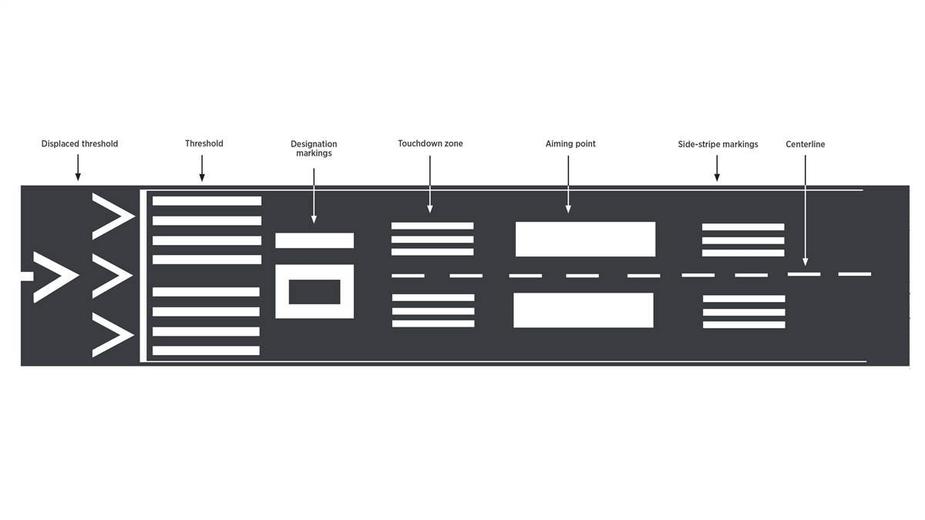Whatever happened to airmanship? Otherwise known as common sense? Why does everything need a rule?
“Look, some nice person painted a line across the runway and some triangles which probably indicate I should touch down behind that line – why don’t I do that? Landing before would probably be impolite, wouldn’t it?”
And
“Oops, I landed a bit short, I’ll do better next time”
Not
“Dear me, have I broken a rule? Let me ask that nice policeman over there and to be safe get a toothbrush and my pyjamas in case I get arrested for my heinous deed!”
Guys aren’t you mixing up “touchdown zone” with “threshold”?
The runway for landing begins behind the threshold. Whether the area in front of it is fit for aircraft movements doesn’t matter.
gallois wrote:
If landing in the other direction would it necessarily be a part of the LDA?
My question still is would it be notamed?
Yes and yes.
UdoR wrote:
That’s not an interpretation. That’s German law, actually in force. § 25 (1) third sentence, item 1 LuftVG says that any landing outside published runway is only allowed if the land owner and the authority (Luftamt) agrees. Published runway begins at threshold for landing.According to § 60 (1) item 4 LuftVG you go to jail for up to two years if you conflict § 25 (1) third sentence, item 1.
That’s not a joke.
However it’s interesting to read that it’s not the same point of view in other countries.
I would disagree with this. The text you quote says:
“Luftfahrzeuge dürfen außerdem auf Flugplätzen
1.
außerhalb der in der Flugplatzgenehmigung festgelegten Start- oder Landebahnen oder
[…]
nur starten und landen, wenn der Flugplatzunternehmer zugestimmt und die Genehmigungsbehörde eine Erlaubnis erteilt hat […]"
I would argue that “Start- oder Landebahn” does not automatically imply “after the displaced threshold”, considering that it does not say “Landebahn” only.
That is wrong. The reason it says “Start- oder Landebahn” is because the phrase refers to both takeoffs and landings. You can’t legally land on a Startbahn, like runway 18 in EDDF.
UdoR wrote:
Published runway begins at threshold for landing.
It that also a definition in the LuftVG? Because according to ICAO and EASA – and even the DFS – the published runway does not begin at a displaced threshold. Look at any AIP entry for a German airport with displaced threshold and you will see that the “runway dimensions” do not take a displaced threshold into account. The declared LDA certainly does!
E.g. The published runway length in AIP-Germany for Stuttgart RWY 07 states that the length is 3345 m, even though the threshold is displaced 300 m, so the LDA is 3045.
On the other hand, starter extensions are not included in the runway length, see e.g. RWY 09C/27C in Hannover.

“My” runway looks like this 

Not landing inside the “threshold” there will result in a big bang and a fire 
I also use ENVA a lot, which has displaced thresholds in each end. I have never even thought about the legality of landing before the threshold, as I do that from time to time to get to the first taxiway on 27. I have heard a complain from anyone. One has to be aware of the lights reaching up in the air though. The big jets use the “wrong” side of the threshold all the time when taking off. Runway 09 is always used that way by the big jets. Us smaller aircraft, and Widerøe, never taxi that far (unless landing at 27  ) At 27 the big jets only do it from time to time when heavy loaded, since it requires backtracking.
) At 27 the big jets only do it from time to time when heavy loaded, since it requires backtracking.
Clearly the part at the “wrong” side of the threshold is equally a part of the runway.
Taking off using a displaced threshold is entirely normal and allowed.
Landing before a displaced threshold means you are landing in an area that has not been declared as available for landing by the airport authority. The reason for this can often seem obvious but is not normally known to pilots. It oculd be (and often is) an obtsacle consideration, or could be noise, or could be surface strength etc.
This is an taken from the FAA website, although the definition is similar elsewhere:
Displaced Threshold. A displaced threshold is a threshold located at a point on the runway other than the designated beginning of the runway. Displacement of a threshold reduces the length of runway available for landings. The portion of runway behind a displaced threshold is available for takeoffs in either direction and landings from the opposite direction.
It quite obviously implies that the portion behind a displaced threshold is not availbe for landings in the same direction.
Runway edge lights should also be red around a displaced threshold.
I just can’t understand the desire to land in an area which is before the threshold, marked in such a way as to suggest going further forward before landing (assuming even you had no kowledge of markings), is not part of a declared available landing distance and may have red lights around it.
Pirho wrote:
The reason for this can often seem obvious but is not normally known to pilots
In most cases it is. Goggled a bit, and found this:

Can’t say I have taken much notice of this, but the first one I think I have seen a lot. The third probably also, because the X is kind of obvious. For the first two, the area is clearly part of the runway. The last two are not part of the runway. That’s a big difference. The first two are procedural (for whatever reason, don’t know what), the last two are physical.
I think there is more to it. There have been several cases at ENVA where a GA aircraft has not landed on the runway. Due to turbulence and other circumstances some have landed on the taxiway (N-S), others have landed on the X’ed out old cross-runway (NW-SE), now part of military installation with fences, but at least 1000-1500m of it is still in fine condition. You will only receive a clearance from the tower to land on the runway. Not landing on the runway, is therefore not in accordance with the clearance you got. In those freak cases, the tower simply say “cleared to operate in the area” or similar (you will not get a “yes you can land”  ). Landing on the military area is legally no business of Avinor at all. If you get a permission from the military, you can use that area. The tower will simply give the same non-clearance. It’s all in C airspace.
). Landing on the military area is legally no business of Avinor at all. If you get a permission from the military, you can use that area. The tower will simply give the same non-clearance. It’s all in C airspace.
LeSving wrote:
Can’t say I have taken much notice of this, but the first one I think I have seen a lot.
The difference between the chevrons and the arrows is pretty important to know about…
In those freak cases, the tower simply say “cleared to operate in the area” or similar (you will not get a “yes you can land” ). Landing on the military area is legally no business of Avinor at all. If you get a permission from the military, you can use that area. The tower will simply give the same non-clearance. It’s all in C airspace.
That’s a bit unusual but it totally makes sense. It just means that ATC is not controlling – or separating – movements on the “non-runways”. It’s really not different from having a secondary, uncontrolled, airport inside the control zone of a primary airport (like my home airfield, btw). You need a clearance to operate, but no take-off or landing clearances.